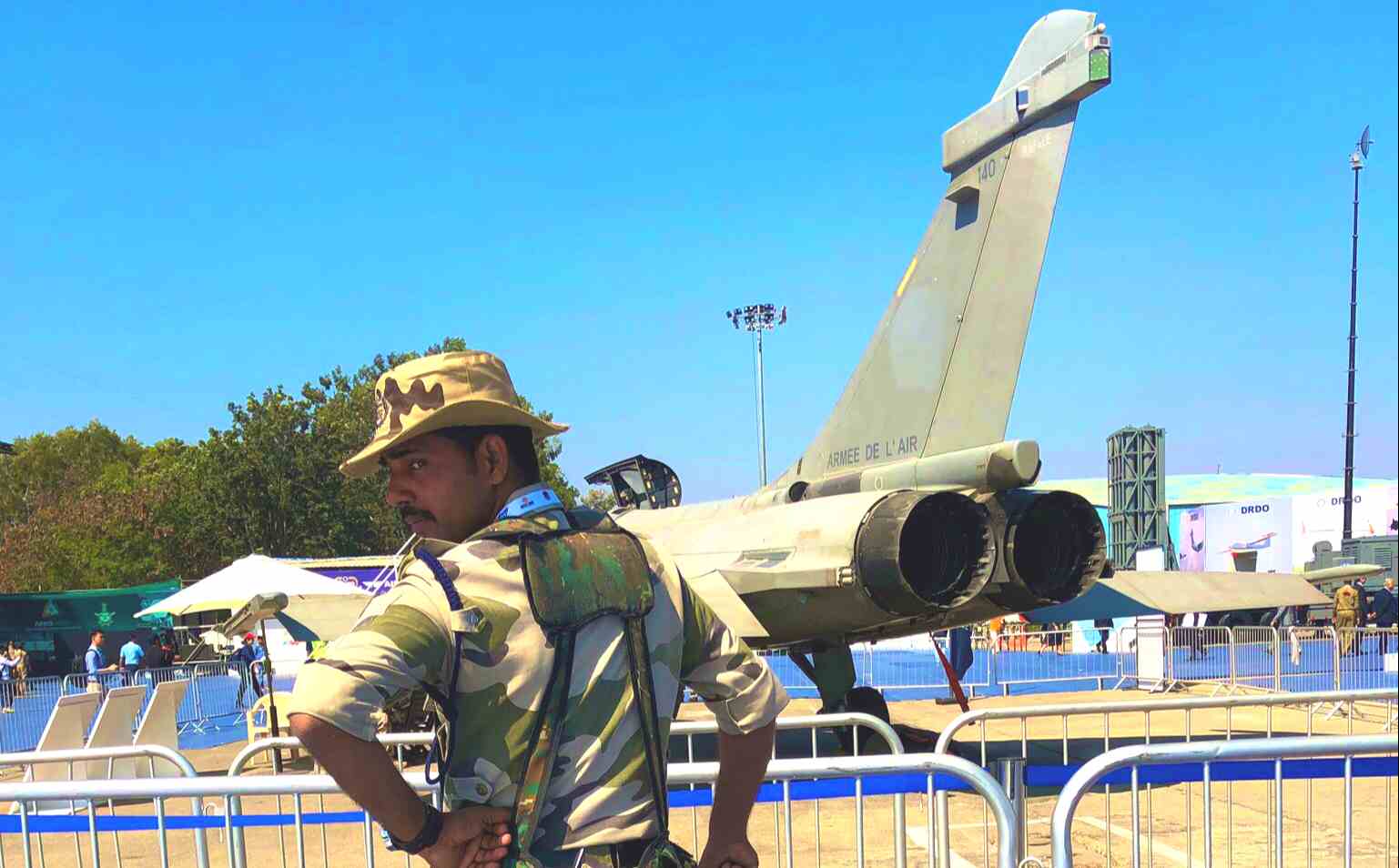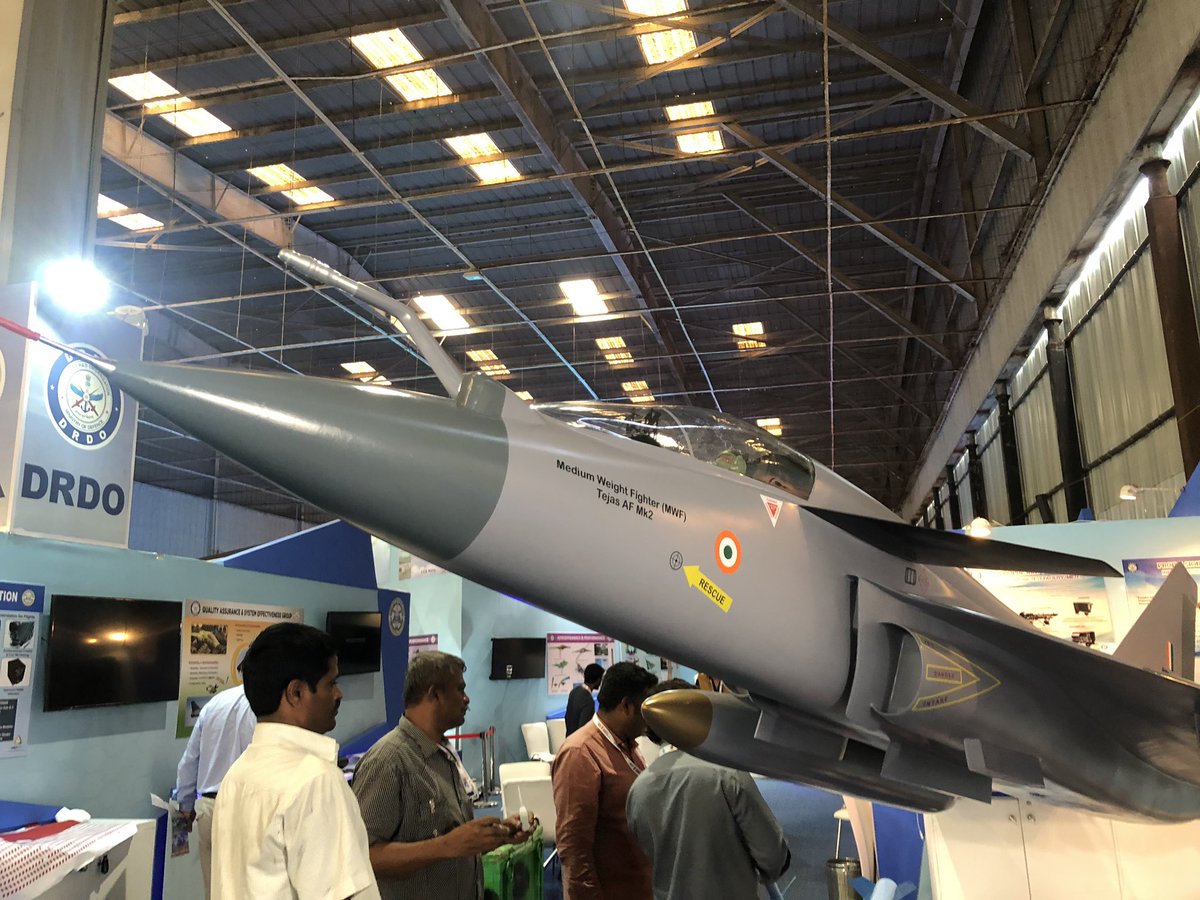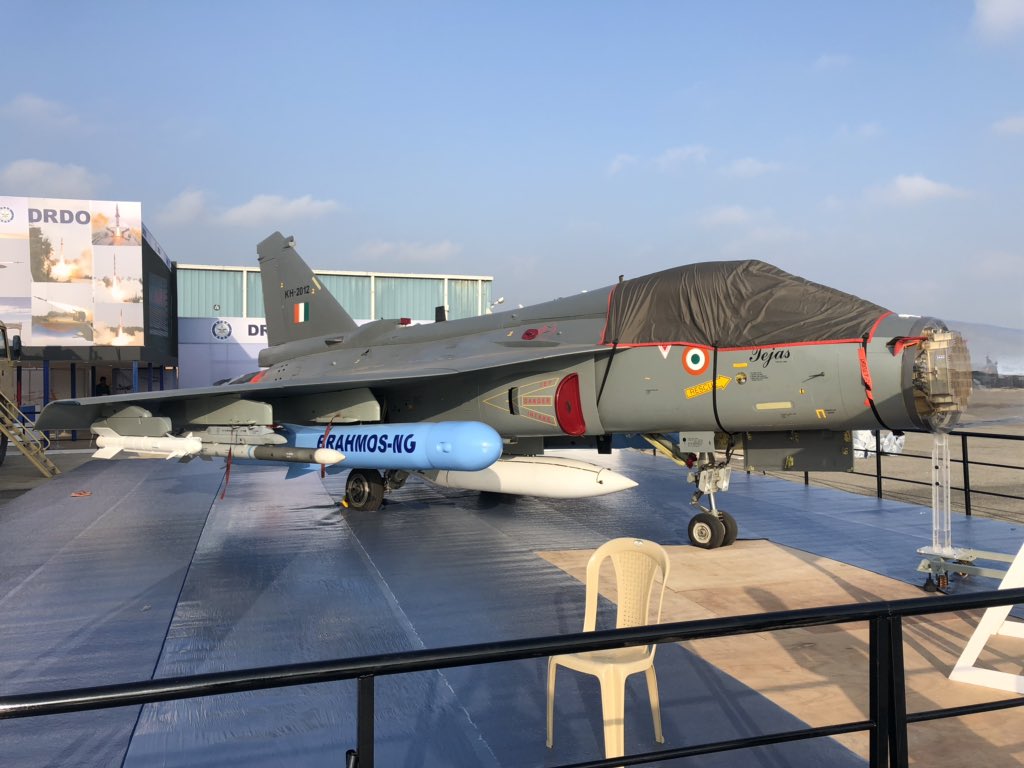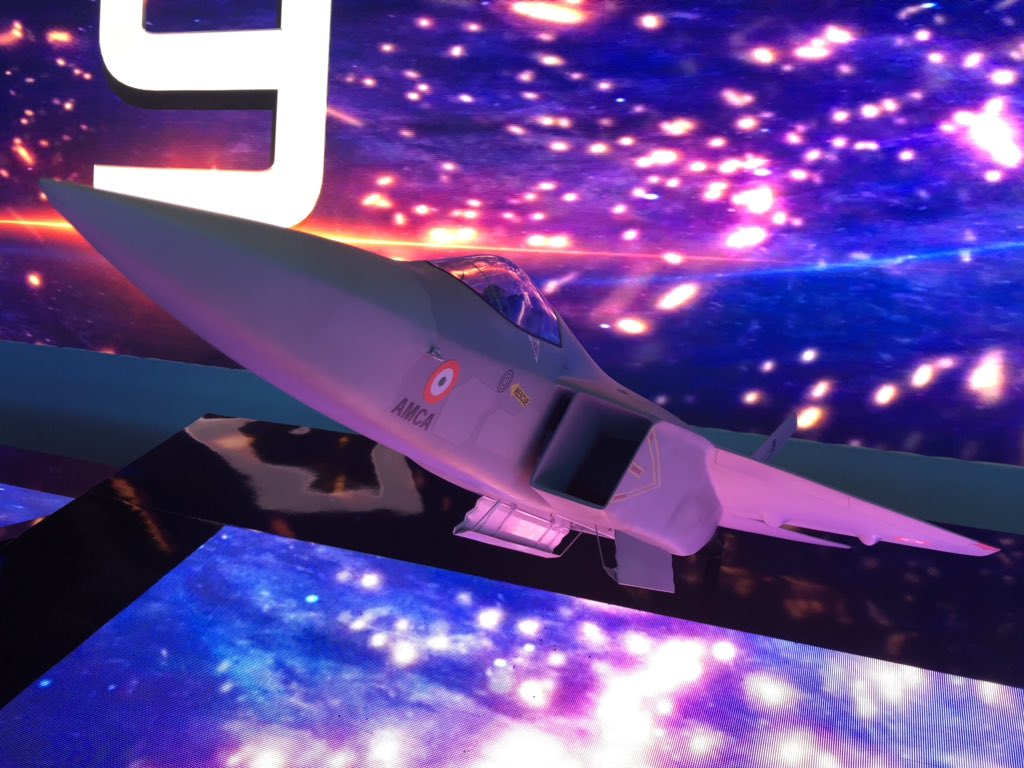
At one end is an old MiG-21 fighter, that unignorable emblem of what must pass. A short distance away, nestled in a hangar is a new Indian fighter jet model — a new avatar of the troubled LCA Tejas — that its makers hope the Indian Air Force will buy in hundreds unlike the jet that came before it. And somewhere in the middle is a Rafale, its aggressively enforced barricades lined by a posse of armed guards, almost as if to shield it from the still raging political storm 2,000 kilometers away in India’s national capital. It must be that most unintended of ironies that Asia’s ‘most prestigious’ aviation show, Aero India, has only served to emphasise the nightmare roads — spreading in every direction — towards India’s next fighter aircraft.
For starters, there’s none of the electricity you’d expect ahead of a big, self-confidently ambitious program like India’s 110 Make-in-India fighter contest. While most vendors have the usual cautiously optimistic words to say about India’s path forward, most are quietly nervous about just how the Strategic Partnership (SP) model will work on such a complex venture, especially since most of the seven aircraft bids have already tied up with Indian partners. With an RfP on the 110 fighters expected only late this year, or early 2020, there remains little clarity how this ‘arranged marriage’ (as one participating airframer put it) will be executed without the some very violent yoking around. All seven prospective contenders in the contest showed up to the Aero India show in different forms:
Here’s how the 7 aircraft that have responded to the Indian Air Force’s RFI for 110 fighters are present at #AeroIndia2019. Clockwise from top left:
F/A-18
Rafale
Gripen E
Typhoon
Su-35
MiG-35
F-21/F-16 Block 70 pic.twitter.com/os0Egs8zLe— Livefist (@livefist) February 20, 2019
The only bit of buzz from the contest today was Lockheed-Martin’s announcement of the F-21, a modified version of the F-16 Block 70. While Lockheed-Martin pitched the Block 70 in response to the IAF’s 110 fighter RFI, it will field the F-21 in response to the expected RfP. Livefist had first details today on the F-21:
From the dorsal section, to a triple launcher to the probe-drogue system, here’s everything that’s different in @LockheedMartin’s F-21 compared to the F-16 Block 70. #AeroIndia2019 https://t.co/INEfBVMOLg pic.twitter.com/2mdlHyFYti
— Livefist (@livefist) February 20, 2019
Over to India’s LCA Tejas program, a much-anticipated highlight of the show today was the unveiling of a ‘Medium Weight Fighter’, a heavier — and therefore rechristened — version of the LCA Mk.2. With the design phase complete, India’s Aeronautical Development Agency (ADA) is aiming to complete prototyping and get the first aircraft into the air by 2023.

After first revealing the MWF, Livefist conducted this detailed interview with a program manager, with details about the aircraft’s weaponry, specifications, timelines and targets. Livefist also reported last year that the Indian Air Force is looking at at least 12 squadrons of the MWF, if it meets requirements. With a special focus on maintainability, the MWF could be an excellent way forward beyond the 123 LCA Tejas Mk.1/1A aircraft that the IAF will induct over the next few years.
LIVE: All your questions answered on India’s new canard jet concept, the Medium Weight Fighter. https://t.co/TA9QsA51bV
— Livefist (@livefist) February 20, 2019
The LCA Tejas’s long road to fruition was also emphasised today with the belated handing over of final operational clearance (FOC) documents to the Indian Air Force. These documents pertain to the Mk.1 baseline aircraft, only 40 of which will see service. The Indian Air Force is yet to finalise its order for 83 improved Mk.1A aircraft. Livefist detailed the Mk.1A configuration here. The Medium Weight Fighter seeks to vanquish the hard lessons learned from the LCA Tejas program to turn around a fighter faster, cheaper and much more easily maintainable than its predecessor.

A display that has attracted significant attention at the show is a mock-up of the baseline LCA Tejas sporting, among other things, a pair of BrahMos NG missiles. Livefist reported about the BrahMos NG‘s payload plans for future platforms, particularly the Su-30 MKI.
Another program of high priority is the Advanced Medium Combat Aircraft, India’s fifth generation concept jet. The Indian Air Force declared yesterday that the AMCA would be its priority ‘if it comes up on time’. The IAF doesn’t have much of a choice for the moment, having walked away from the Su-57/FGFA program, declaring that it will consider a commercial buy once the jet is complete and ready for sale. As China gallops into the fifth generation fighter arena, India’s own plans have considerably slowed now, with much of its energies still locked to 4++ generation fighters, including expensive campaigns that will suck out most of its foreseeable budgetary resources. On its part, the AMCA program, as Livefist has reported in detail here and here, is hoping to move forward as quickly as possible with prototype shape testing and other fundamental stealth technologies. While reports suggest a targeted first flight by 2025, it is near totally unlikely that this will happen before 2030.

Finally, there’s the question of the Rafale, the centrepiece of a continuing political war being fought before India’s next election in a few months. Asked about the scandal, Dassault Aviation CEO Eric Trappier told Livefist, “There is no scandal involving the Rafale. If the government wants more than 36 aircraft, we are happy to supply. We will need a minimum order of 100 more aircraft if we are to make the Rafale in India.“
Perhaps the greatest indicator of the Indian Air Force’s urgency — and the difficulty of every other path before it to get combat aircraft soon — is its decision to consider picking up 21 MiG-29s from Mikoyan-Gurevich’s factory at Lukhovitsy, near Moscow. As Livefist reported, the aircraft will be built up from old airframe shells from the 1980s that never became aircraft. It may be no surprise that in the current climate of uncertainty, the old Russian firm has returned aggressively to a show where things are all up in the air. And not in the way that the air force likes.
